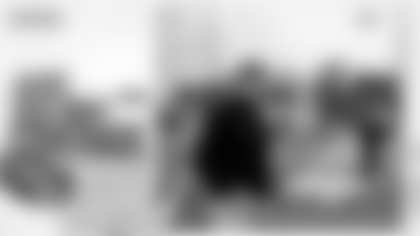Vince Lombardi
It is not often that a given football game takes on an identity of its own...historically speaking.
The storied "Ice Bowl," in which the 1967 Packers shaded the Dallas Cowboys in the coldest weather contest in NFL annals, is one that springs readily to mind...above all others.
Such singular celebrity is rare. It also came to the former Baltimore Colts by way of the 1958 NFL Championship game, which saw the Hosses defeat the New York Giants, 23-17, in the first sudden death overtime in an NFL Championship game.
The latter was to become labeled as "The Greatest Game Ever Played," a reference certain to be challenged by the Packers faithful, understandably partial to the hectic "Ice Bowl" finish - Bart Starr's all-or-nothing sneak for the winning TD and the NFL title with only 13 seconds remaining.
Meanwhile, the Green and Gold's 152nd meeting with the Detroit Lions - upcoming in the Motor City's Ford Field Sunday - brings back memories of another game that has taken on a historical identity...at least in Green Bay lore.
Admittedly, not of "Ice Bowl" stature, it is informally known in Packers history as the "Run to Daylight Game" - so named because the week of the game came to be chronicled and preserved for posterity as the basis for a book entitled, appropriately enough, Run to Daylight.
The intriguing tome was authored by W. C. Heinz, a boxing writer by trade, who was spending much of 1962's training camp and early season shadowing Vince Lombardi in preparation for writing it. And, of course, helping immortalize the former Fordham "Block of Granite" in the process.
The focus, it turned out, was on the practice week leading up to the Lions contest (Oct. 7, 1962) and how the relentless Lombardi readied his team for a game - physically and psychologically.
Run to Daylight was indeed a logical choice for the title, since Lombardi had quickly turned the long-dormant Packers into world champions in just three years, having done so largely via repetitious emphasis on his offensive credo.
Once described as an offense of "complex simplicity," it was centered around Jim Taylor and Paul Hornung getting to whatever hole might be available - with all possible haste - and through it as soon as possible, with, of course, the considerable assistance of Forrest Gregg, Jerry Kramer and Fuzzy Thurston, among others, blocking up front.
In retrospect, the Run to Daylight scenario was made to order for the '62 game, which became the focal point of the book. Both teams entered that fourth week of the season with 3-0 records - and soaring hopes.
As the third quarter of a taut defensive struggle ended, the Lions were out front, 7-6, having scored the only touchdown of the game in the second period, courtesy of Alex Karras, who recovered a Bart Starr fumble at the Green Bay 34-yard line to set up the score.
The Packers, meanwhile, had found it necessary to settle for a pair of routine Hornung field goals, both 15-yard efforts.
The fourth quarter was to mark the "big play" emergence of the Packers' Herb Adderley, a second-year cornerback from Michigan State who had been Green Bay's first round draft choice a year earlier. He abruptly turned the tide late in that final period, leaping in front of intended receiver Terry Barr to intercept a Milt Plum pass and sprint 40 yards down the west sideline to the Detroit 18 before being grounded.
After Hornung picked up 2 yards on first down and Taylor 3 on the next play, only 36 seconds remained, dictating a Green Bay timeout.
The versatile Hornung again was called upon and he delivered a decisive, 21-yard field goal.
Following Pat Studstill's return of the succeeding kickoff to the Detroit 26, the Packers weathered four desperation Plum passes, all incomplete, to carry the day, 9-7.
The victory, however, came with an eventual "price." The Lions, sullenly nursing their wounds in the interim, exacted revenge in their Thanksgiving Day rematch at Detroit, sacking Starr 11 times on the way to a 26-14 victory that blighted the Packers' 10-0 record.
Yet, in 1962's final accounting, it was the Green and Gold who prevailed.
The Packers rebounded from that Motor City misadventure to sweep their last three regular-season games and forge a glittering 13-1 record - the best in their history.
They proceeded from there to claim a second consecutive NFL championship with a 16-7 victory over the Giants in New York's hallowed Yankee Stadium, beset that day by a minus-47 degrees wind chill.
*Continuing an association with the team that is more than 55 years old, Lee Remmel was named the first official Team Historian of the Green Bay Packers in February 2004. The former Green Bay Press-Gazette reporter and Packers public relations director, Remmel will write regular columns for Packers.com as part of his new assignment.
In addition to those articles, Remmel will answer fan questions in a monthly Q&A column. To submit a question to Remmel, click here.*
**














